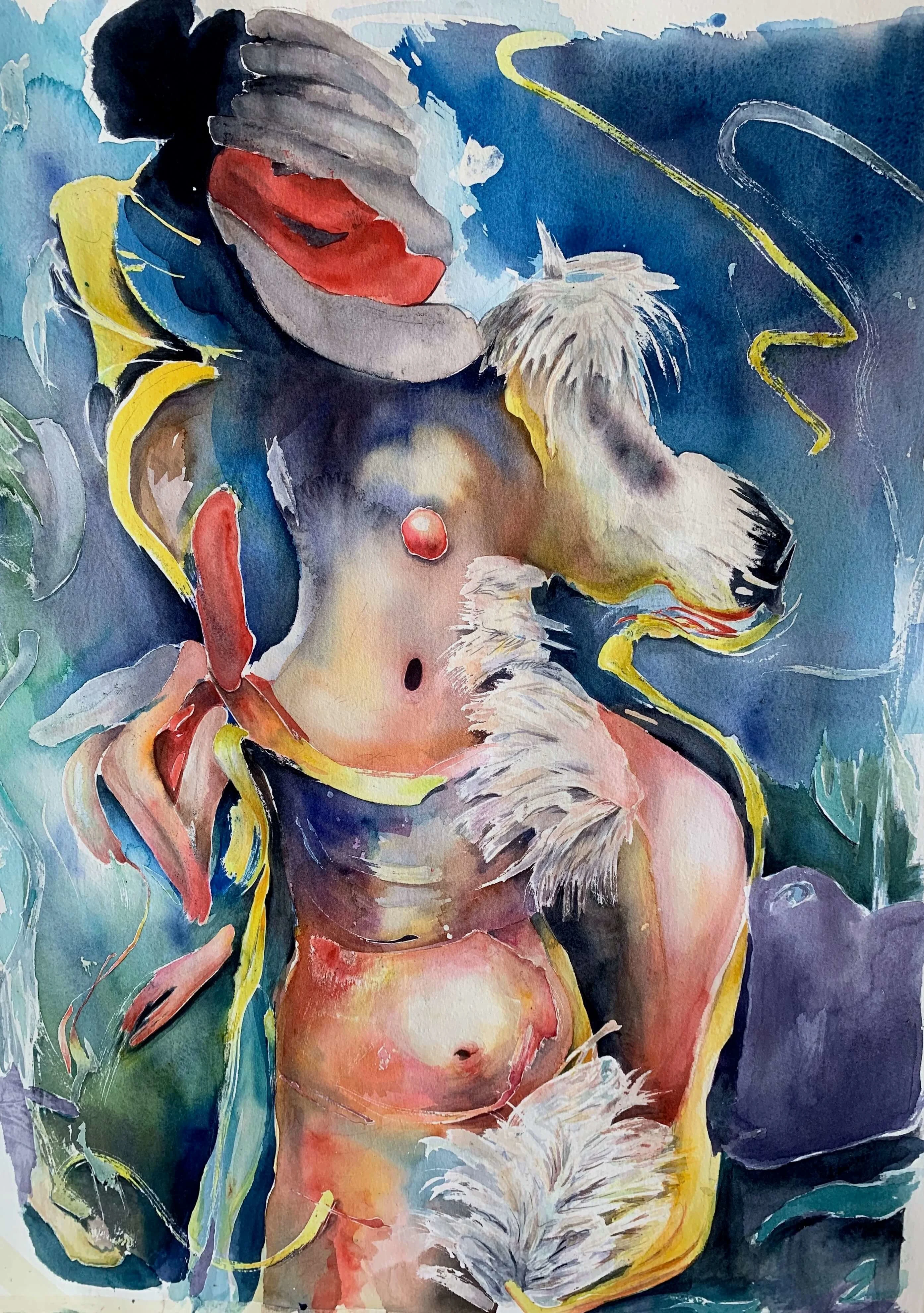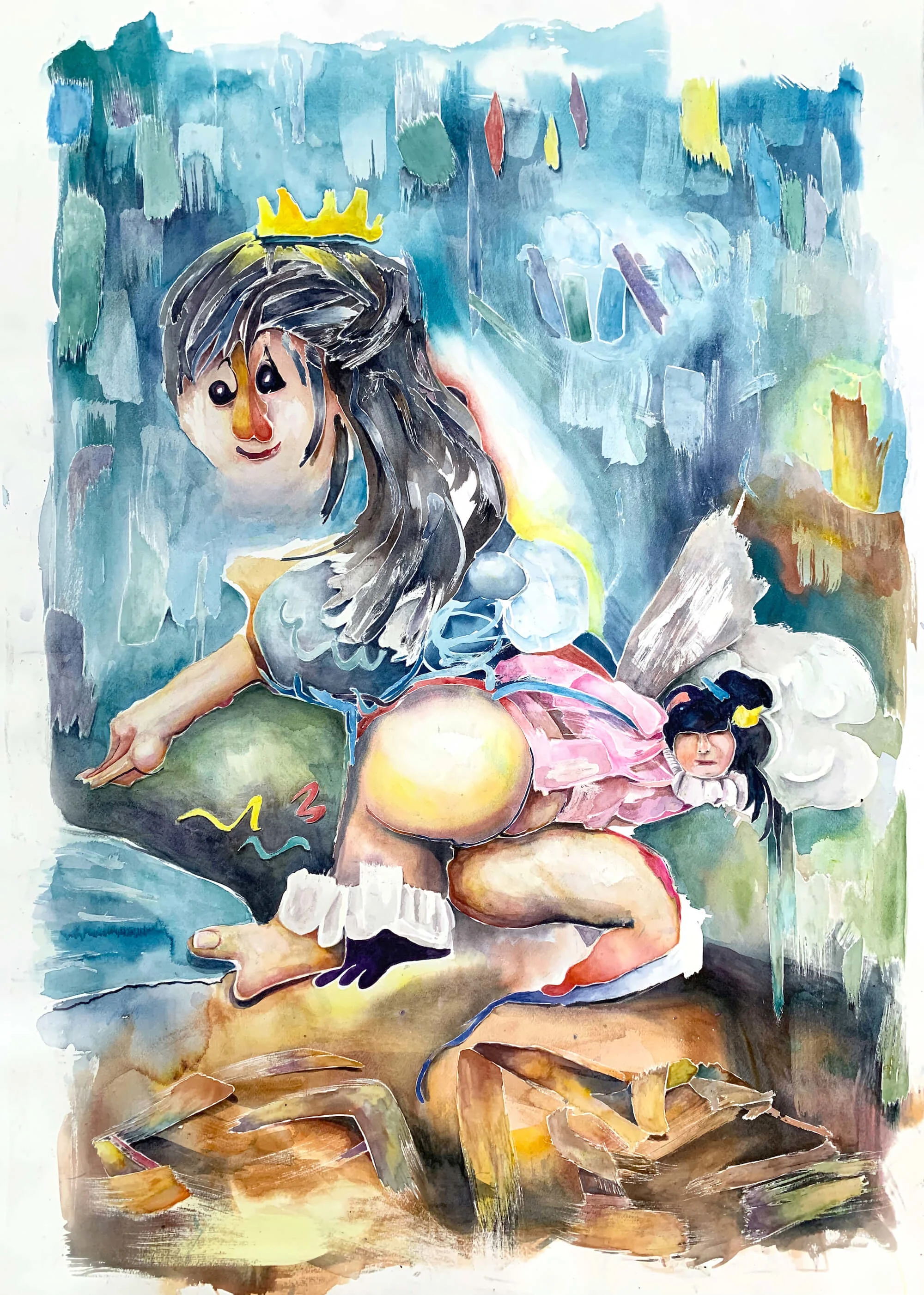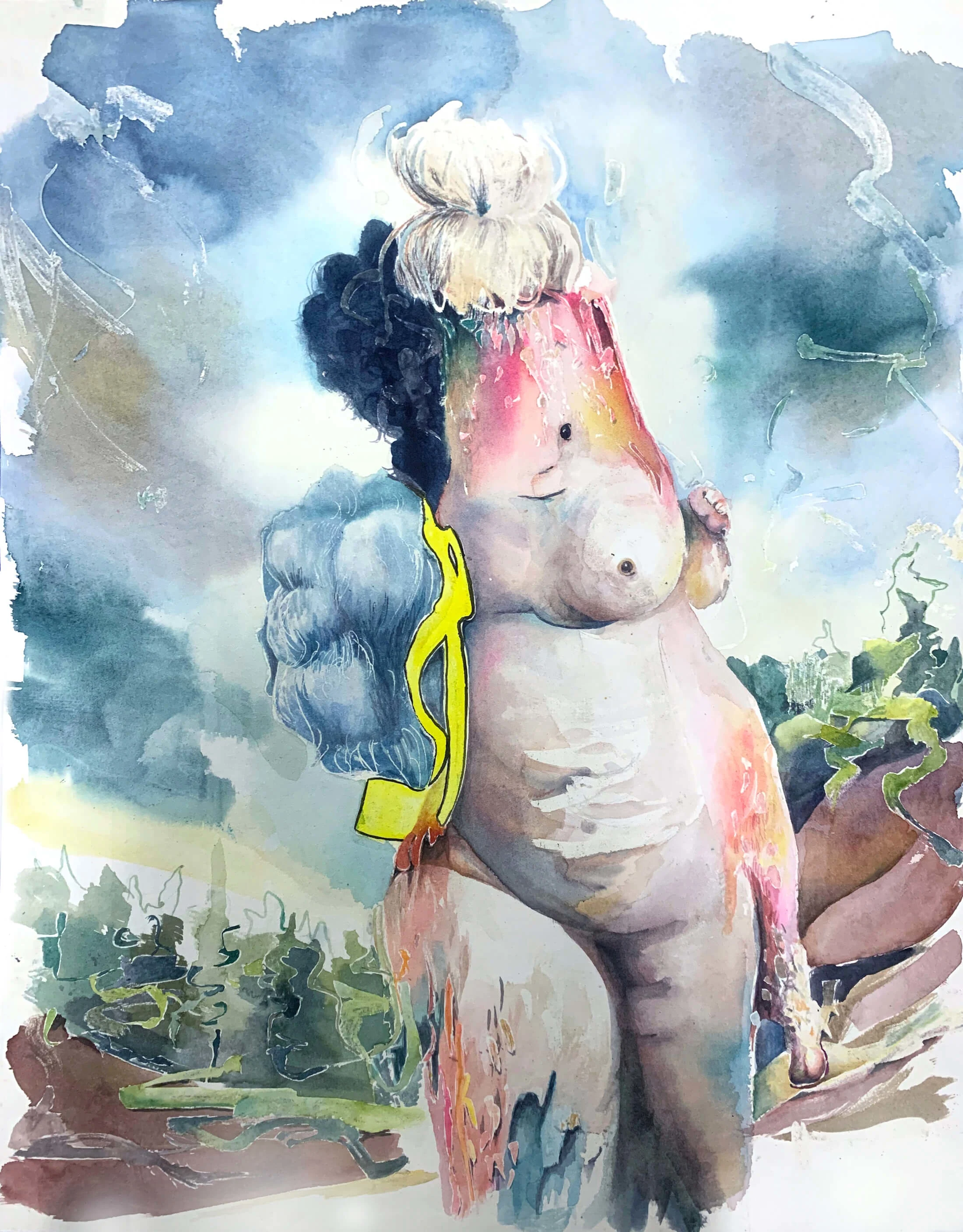

Canadian artist Beth Frey has a knack for creating an uncanny universe inhabited by fleshy, muppet-like creatures that seem to belong to their own little tribe. What started as a multimedia practice including watercolor, sculpture and video, has recently traversed to the world of AI. Using DALL-E, she’s able to add a new dimension to her practice, giving her creatures a tactile, film-like quality. Here, she tells Rolien Zonneveld about the ways the tool helps her to bridge the “analog” world of watercolor with the cinematic world she envisions in her mind.
When you see some of the artworks that advanced AI tools are able to churn out nowadays, you wonder if Hieronymous Bosch might have been a secret time traveler: feeding the tool with prompts sprouted from his fever dream brain and taking the generated distorted bodies and Frankenstein creatures back to the Middle Ages.
An AI tool that has emerged in the last few years and has been fully embraced by the artist community is DALL-E, a clever portmanteau of surrealist painter Salvador Dalí and Pixar’s WALL-E, which is a nod to its capabilities: trained on 250 million images, the tool generates a unique image based on written instructions—the so-called prompts—you feed it, however disjointed, poetic or nonsensical these might be. The results have been startling: images are so hyper-realistic and textural, that you feel like you’re looking at something that actually exists out in the world.



This undoubtedly applies to the universe of the Sentient Muppet Factory that Canadian-born and Mexico-based artist Beth Frey has been creating using DALL-E, parallel to her multimedial art practice. Images she’s generated feel taken from a twisted 70s children's show that never actually made it to the screen—too high risk for evoking nightmares.
Take the bold earless pig for example, greedily licking its lips as if he is about to roast a child on a spit. Or the dapperly dressed cyclops tv host, which looks like it’s delivering Planet Uranus’ top stories of the evening. Or the waxy egg-mum, proudly showcasing her beady-eyed litter. They are all characters bound to the peculiar, yet playful ecosystem Beth has been developing throughout her career. The AI tool has provided her with a thrilling new playground.


The Sentient Muppet Factory, the Instagram account where she gathers and showcases her latest AI works, is only a relatively recent exploration. The artist has steadily been expanding her art practice ever since she graduated with a degree in painting and drawing from Concordia University. Her career started with watercolor paintings, through which she created puppet-like figures with odd-looking or severed limbs that seem to belong to their own little tribe.
“Creating grotesque bodies is a strategy to me,” Beth explains. “As a woman, you are constantly being subjected to a desired, male gaze. I wanted to create untethered bodies that fell outside the norm, and as such, were liberated from that traditional gaze. While the paintings might look a bit nightmare-esque, in fact, I consider them to be utopian.” Over time her creatures have increasingly become more hybrid—part human, part animal, part machine—but they always find themselves caught in the midst of a gesture or a mundane act. “It gives them a wry, absurdist sense of humor, which lessens that blow of showcasing something that is very disturbing while still conveying something provocative.”
In 2019, AI tools started to emerge, and unsurprisingly so, Beth jumped onto the opportunity to start experimenting with AI. She saw a chance to close the gap between her static watercolor figures and the cinematic world she envisioned. “I’ve always dreamed of realizing a subversive, psychotic children’s show, and with this photorealistic tool, I was able to create absurd visuals to go with my vision.” What emerged was a body of work that vaguely resembles a tv show from the 70s or 80s, yet feels incredibly novel and boundary-pushing. “There’s undoubtedly a nostalgic, analog quality to my AI work that stems from those decades. It was just such a great era aesthetic-wise: props were still handmade, which gave them an incredible sense of tactility.”


It is no news that there are two camps when it comes to AI generated art, both within the artistic community and beyond. While some acknowledge and celebrate its endless possibilities, others fear that it might render “real” artists obsolete. “I personally don’t see myself as an AI artist, as I consider DALL-E to be just one of the tools in my toolbox,” Beth explains. “I do get the hesitation some might feel—I felt it myself. Was it simply too easy? It took some experimentation to figure it out, but I realized that ultimately it really is a creative process you engage in. Coming up with a prompt is like creating collage art: you keep adding and editing layers and variables till you have your desired outcome. It’s like you're dancing with the tool. I would say DALL-E acts as a digital sketchbook: It helps me push my other work forward as well as generate new ideas on what ‘could be.”



What has also been very exciting is how her work has connected her to different disciplines within the creative community. “Not only has it piqued interest from the field of film, but it has also put me in contact with puppeteers, costume designers, make-up artists and directors,” she says. “It shows that AI doesn’t dispel art, but rather engenders new interdisciplinary collaborations. While it is still very early days, turning my work into a short film would be an absolute dream come true!”


